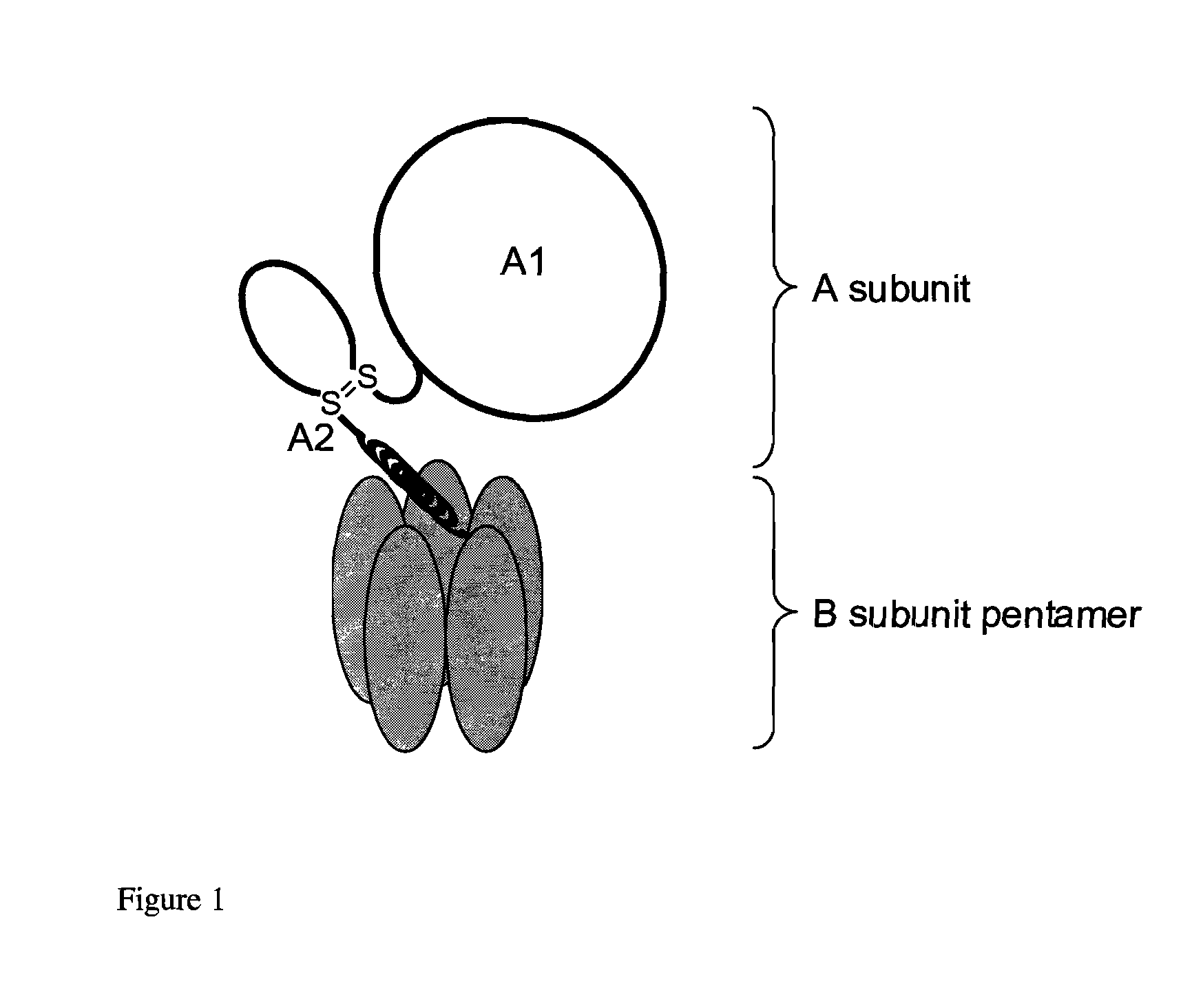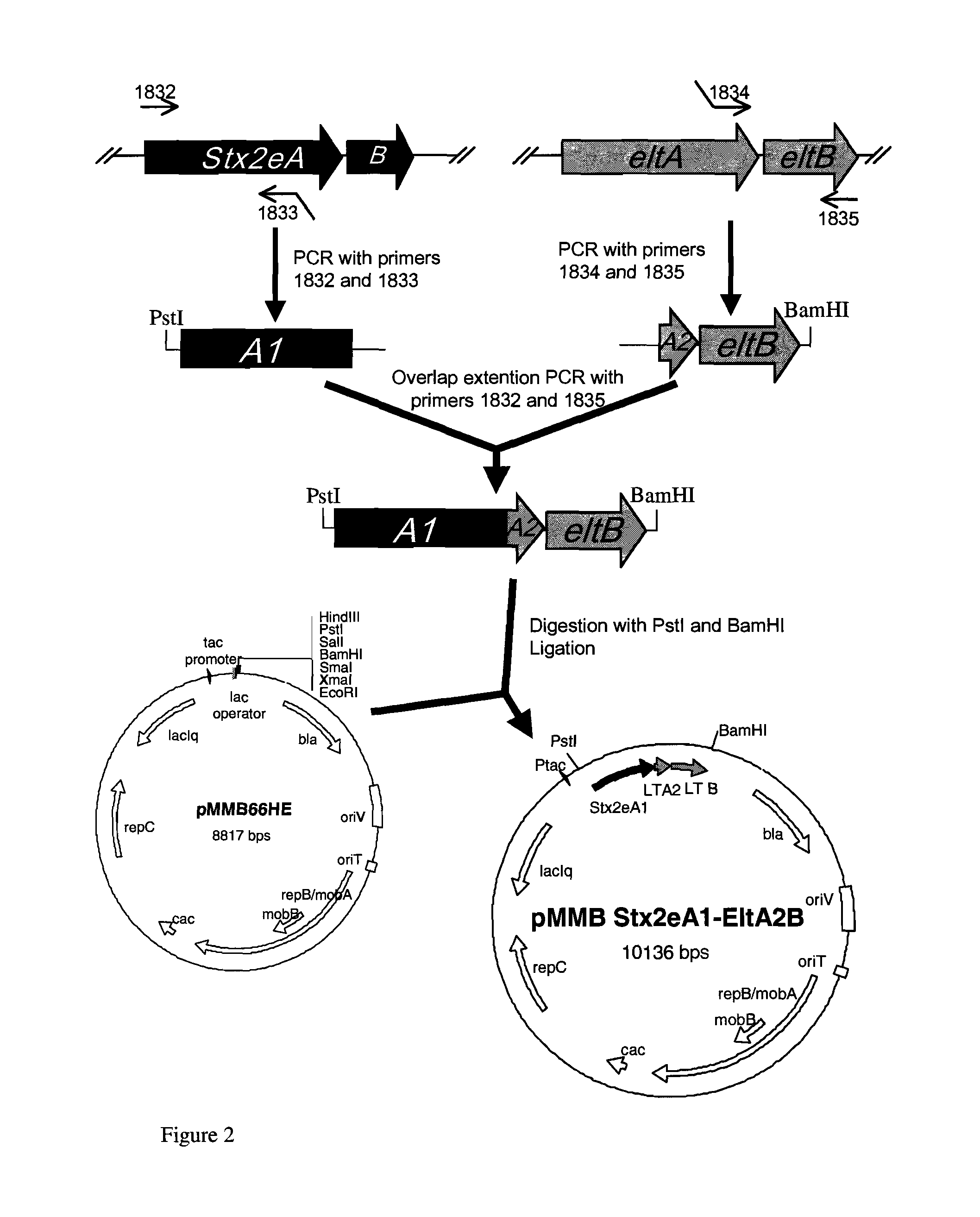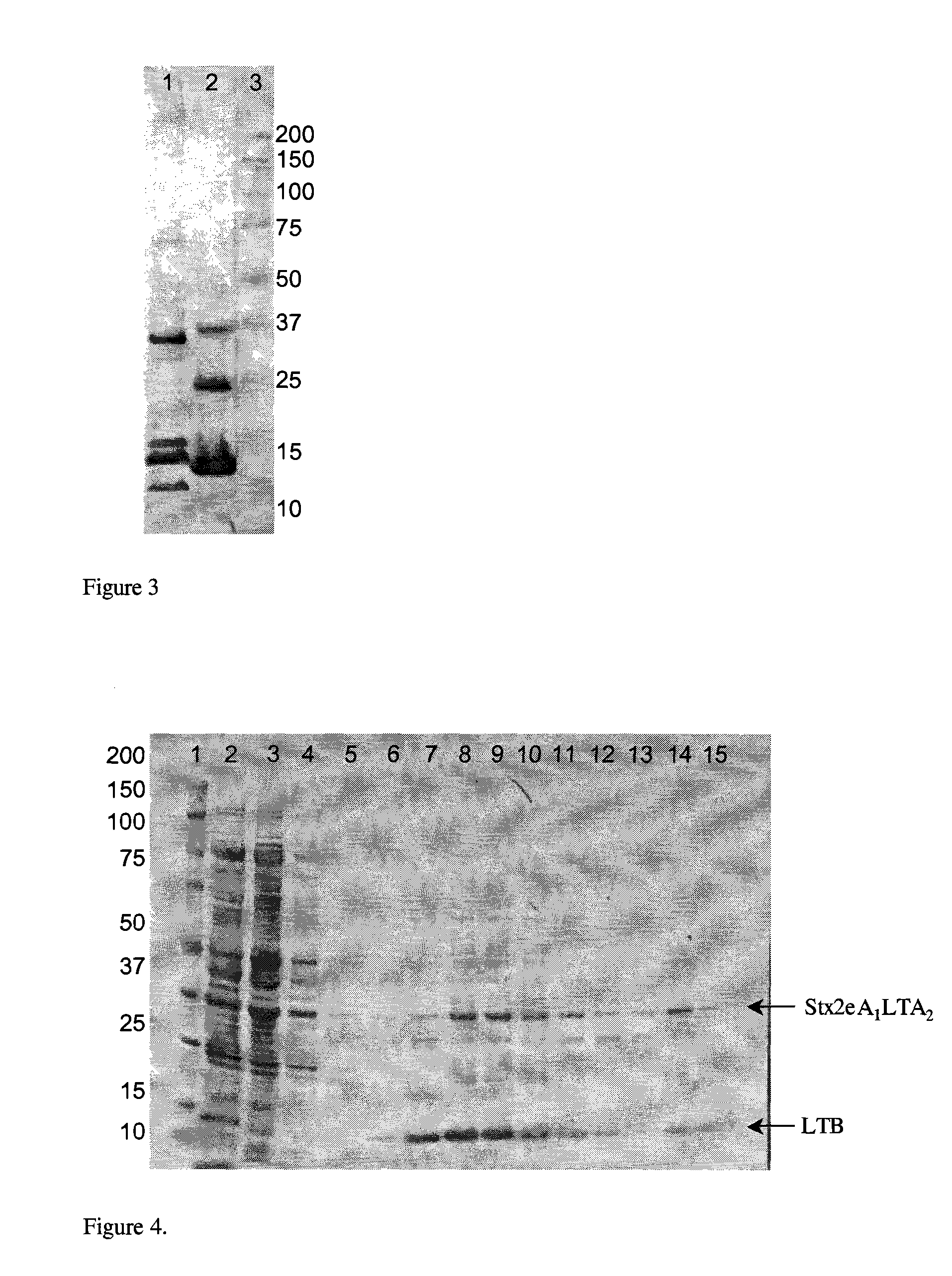Hybrid Shiga-like toxin
- Summary
- Abstract
- Description
- Claims
- Application Information
AI Technical Summary
Benefits of technology
Problems solved by technology
Method used
Image
Examples
example 1
Construction of Expression Plasmid
Bacterial Strains and Plasmids
[0098]E. coli host strain BL21(DE3)star, HMS174(DE3) and BL21codon+RIL(DE3) were purchased from Novagen (Madison, Wis., USA). E. coli strain TOP10F′ and plasmid pCR2.1—TOPO TA and pCR-bluntII-TOPO were purchased from Invitrogen (Groningen, the Netherlands).
[0099]Plasmid pMMB66HE has been described by Furste, J. P. et al., in Gene 48: 119-131 (1986).
PCR Amplification and Cloning of PCR Products
[0100]PCR on E. coli chromosomal DNA was performed with the SUPERTAQ PLUS DNA polymerase. The PCR mixture contained 20 U / ml SUPERTAQ PLUS (HT Biotechnology Ltd, Cambridge, UK), SUPERTAQ buffer containing (HT Biotechnology Ltd, Cambridge, UK), 8 mM dNTPs (Promega, Wis., USA), 10 pmoles of primers and 15 ng chromosomal DNA of E. coli as DNA template. Oligonucleotide sequences of all primers used for amplification of DNA are listed in table 1. PCR products were separated on agarose gel and gel purified using Qiagen PCR purification ki...
example 2
Expression and Purification of Stx2eA1LTA2B
Expression of Recombinant Protein
[0104]E. coli expression strains containing a tac promoter based expression vector were grown overnight at 37° C. at 200 rpm in 5 ml TB with the appropriate antibiotics and 10 mM MgSO4. The following morning the overnight cultures were diluted 1:100 in 5 ml TB with the appropriate antibiotics. These cultures were grown under the same conditions until an OD600 of 0.5 was reached, measured on a NOVASPEC II spectrophotometer (Pharmacia, Woerden, the Netherlands). At this point, the cultures were induced by the addition of IPTG to a final concentration of 1 mM and followed by an additional incubation at 37° C. for 3 hours. 100 μl samples were taken for analysis at the beginning and end of the final incubation and of the appropriate controls. The samples were analyzed by SDS page, followed by a COOMASSIE BRILLIANT BLUE staining. The remaining culture was centrifuged at 5,000 rpm and the pellet was stored at −20° ...
PUM
| Property | Measurement | Unit |
|---|---|---|
| Heat | aaaaa | aaaaa |
Abstract
Description
Claims
Application Information
 Login to View More
Login to View More - R&D
- Intellectual Property
- Life Sciences
- Materials
- Tech Scout
- Unparalleled Data Quality
- Higher Quality Content
- 60% Fewer Hallucinations
Browse by: Latest US Patents, China's latest patents, Technical Efficacy Thesaurus, Application Domain, Technology Topic, Popular Technical Reports.
© 2025 PatSnap. All rights reserved.Legal|Privacy policy|Modern Slavery Act Transparency Statement|Sitemap|About US| Contact US: help@patsnap.com



